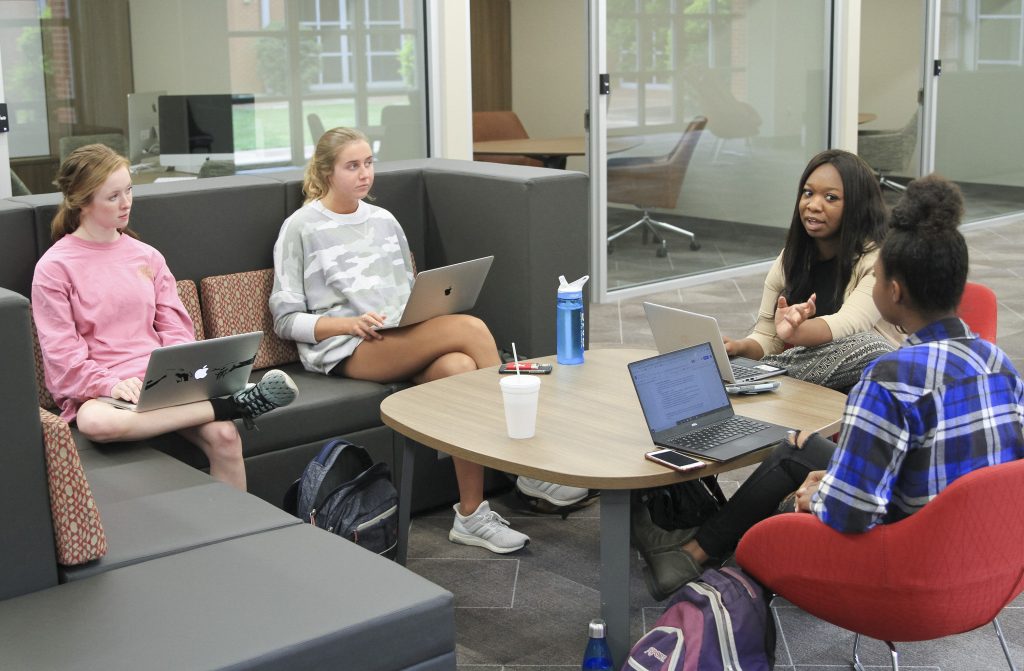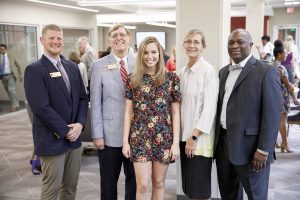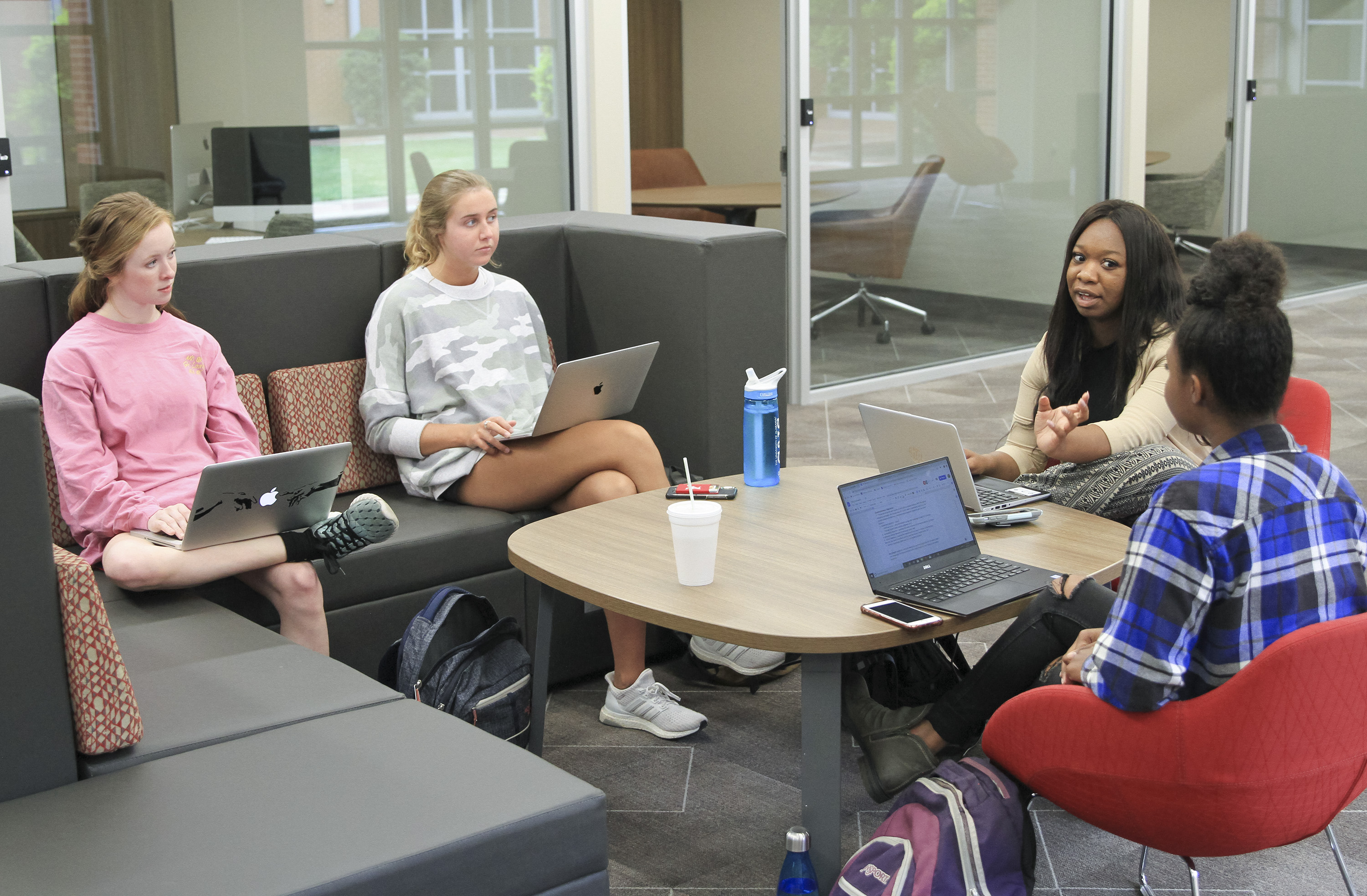UA Unveils Student Community Engagement Center
By David Miller

Seated comfortably in modern décor chairs around a wooden table, four University of Alabama students are brainstorming objectives, strategies and tactics for a local health organization’s outreach plan for African American women.
The students are trading ideas for metrics, as each objective must have measurable goals. Then, they discuss the nuances of their target audiences to ensure their tactics will be effective.
These steps are vital to any communications plan, and whatever the students decide will be put into action for Five Horizons, a West Alabama agency that provides HIV-related outreach and prevention services and specialized and general care.
It’s exactly the level of real-world experience these students are seeking as members of the UA chapter of the Public Relations Council of Alabama. On April 18, PRCA-UA, along with 13 other student groups, gathered for the unveiling of their new home, which will help them expand their community service work.
The UA Student Community Engagement Center is a 4,000-square-foot hub in Capital Hall that will house 14 anchor student organizations from six UA colleges and schools. It is open to all students and groups with an interest in connecting their efforts to engagement work in the community.
“PRCA’s mission is to provide real-world experiences for all of our members through active engagement,” said Anna McAbee, a junior majoring in public relations. “So when we heard about this space, the main selling point was that students would be able to do real-world work.”
PRCA’s 15 members will utilize the space to work with its four community partners – Catholic Social Services, Good Samaritan Clinic, SD Allen Ministry, and Five Horizons – to tackle a variety of community issues, such as hunger, poverty and HIV outreach, by providing communications infrastructure and strategies and multimedia tools for each agency.
Each of the four PRCA teams dedicates roughly 20 hours a week to their respective projects, said Victoria Richburg, an advertising and public relations master’s student from Atlanta who oversees the four projects.
PRCA, along with other student groups, helped influence the design and multimedia resources available in the center when planning began more than a year ago. PRCA was already seeking to expand its community outreach efforts, and the anticipation of having a work space that was convenient and functional for both students and community partners helped raise the “scope and the stakes,” McAbee said.
“Our work is taken seriously now. There are actual companies depending on quality work,” McAbee said.

Dr. Andrew Pearl, director of community engagement research and publications in UA’s Center for Community-Based Partnerships, said the center was designed not only to provide students a designated meeting space, but also to encourage synergy and transdisciplinary work among all student groups. The “cross-talk” has begun, as PRCA has already met with student groups from UA’s School of Social Work and College of Engineering.
McAbee said PRCA now has begun to focus on how it can help the other student groups advance their engagement efforts.
“We’re in a situation where we can go across the hall and talk with people in engineering,” McAbee said. “We didn’t have the opportunity before now. Having other colleges involved allows the opportunity to engage with them and find out about different projects that we wouldn’t have already known about.”
Pearl said the center is the first of its type in the realm of higher education and community engagement. He is keen for the center to be a catalyst for student groups to move “beyond reciprocity and into co-creation,” and to form more authentic partnerships.
“We want our students to understand the mission of each partner, but we want to develop goals in concert with one another,” Pearl said. “Building these relationships in this manner will help get to the root causes of problems.”
